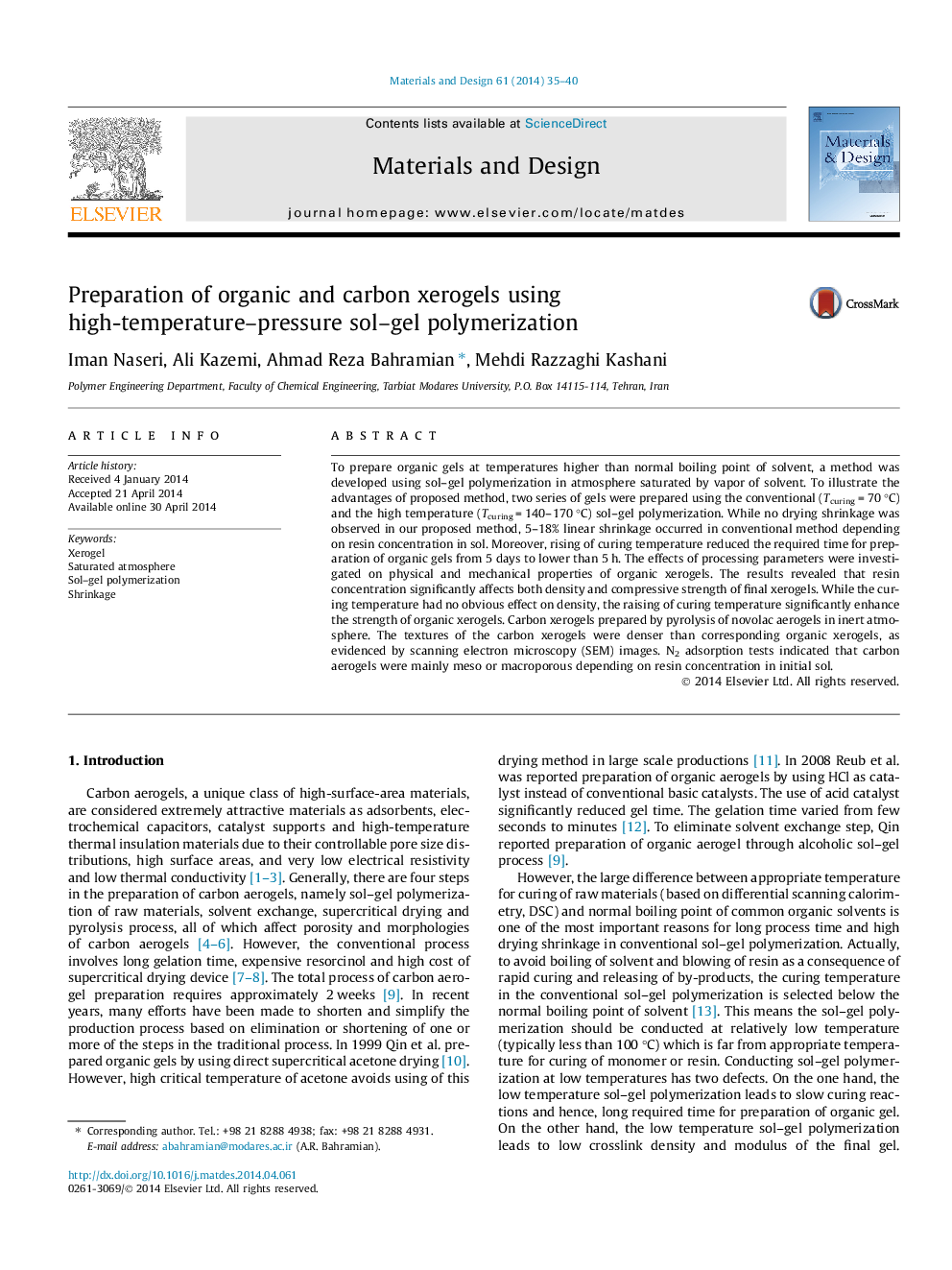| Article ID | Journal | Published Year | Pages | File Type |
|---|---|---|---|---|
| 829129 | Materials & Design (1980-2015) | 2014 | 6 Pages |
•Sol–gel polymerization in vapor of solvent saturated atmosphere is proposed.•Temperatures higher than solvent normal boiling point is used to gelation.•Novolac gel was dried in ambient condition with no shrinkage, successfully.•Required time for preparation of gel reduced from 5 days to about 5 h.
To prepare organic gels at temperatures higher than normal boiling point of solvent, a method was developed using sol–gel polymerization in atmosphere saturated by vapor of solvent. To illustrate the advantages of proposed method, two series of gels were prepared using the conventional (Tcuring = 70 °C) and the high temperature (Tcuring = 140–170 °C) sol–gel polymerization. While no drying shrinkage was observed in our proposed method, 5–18% linear shrinkage occurred in conventional method depending on resin concentration in sol. Moreover, rising of curing temperature reduced the required time for preparation of organic gels from 5 days to lower than 5 h. The effects of processing parameters were investigated on physical and mechanical properties of organic xerogels. The results revealed that resin concentration significantly affects both density and compressive strength of final xerogels. While the curing temperature had no obvious effect on density, the raising of curing temperature significantly enhance the strength of organic xerogels. Carbon xerogels prepared by pyrolysis of novolac aerogels in inert atmosphere. The textures of the carbon xerogels were denser than corresponding organic xerogels, as evidenced by scanning electron microscopy (SEM) images. N2 adsorption tests indicated that carbon aerogels were mainly meso or macroporous depending on resin concentration in initial sol.
